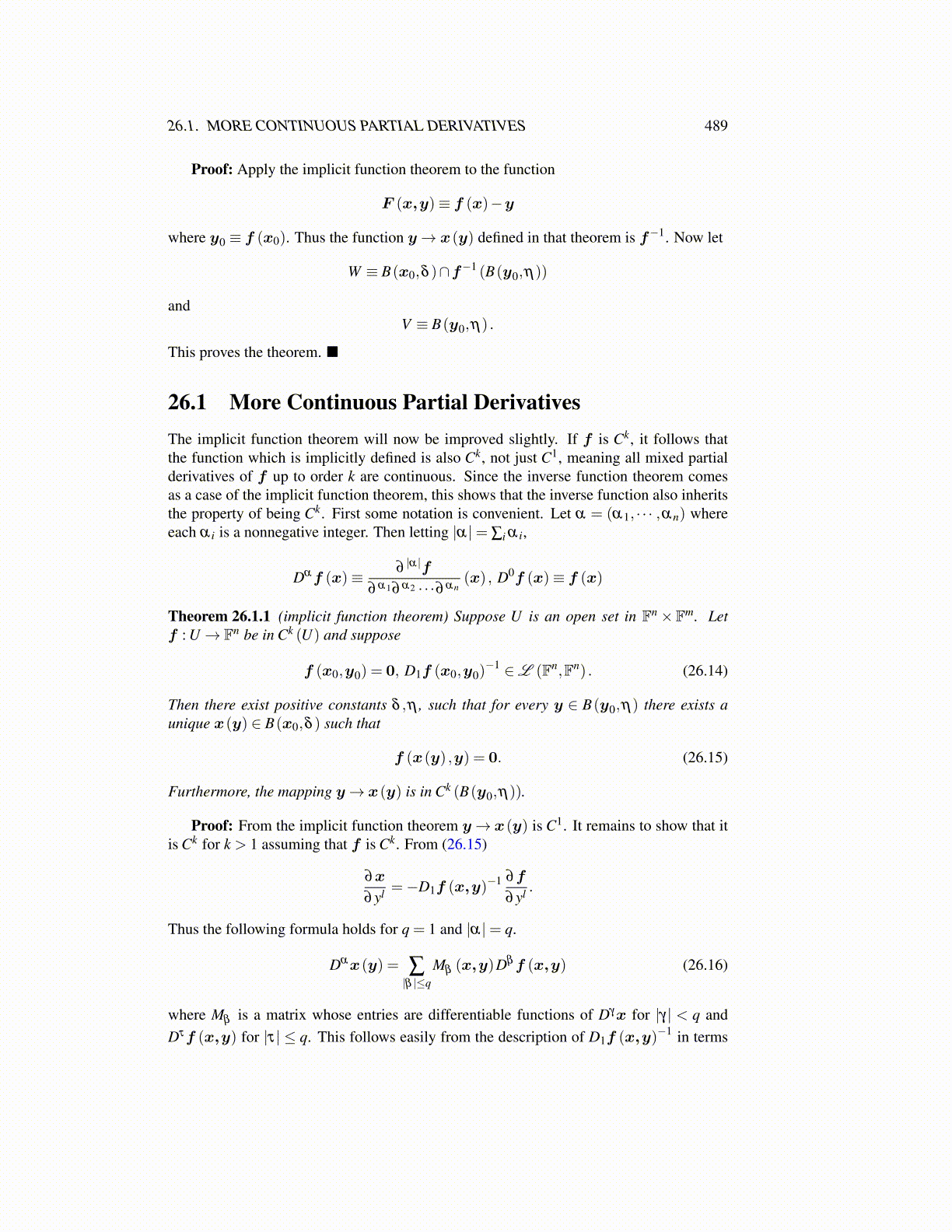
26.1. MORE CONTINUOUS PARTIAL DERIVATIVES 489
Proof: Apply the implicit function theorem to the function
F (x,y)≡ f (x)−y
where y0 ≡ f (x0). Thus the function y→ x(y) defined in that theorem is f−1. Now let
W ≡ B(x0,δ )∩f−1 (B(y0,η))
andV ≡ B(y0,η) .
This proves the theorem. ■
26.1 More Continuous Partial DerivativesThe implicit function theorem will now be improved slightly. If f is Ck, it follows thatthe function which is implicitly defined is also Ck, not just C1, meaning all mixed partialderivatives of f up to order k are continuous. Since the inverse function theorem comesas a case of the implicit function theorem, this shows that the inverse function also inheritsthe property of being Ck. First some notation is convenient. Let α = (α1, · · · ,αn) whereeach α i is a nonnegative integer. Then letting |α|= ∑i α i,
Dαf (x)≡ ∂ |α|f
∂ α1∂ α2 · · ·∂ αn(x) , D0f (x)≡ f (x)
Theorem 26.1.1 (implicit function theorem) Suppose U is an open set in Fn×Fm. Letf : U → Fn be in Ck (U) and suppose
f (x0,y0) = 0, D1f (x0,y0)−1 ∈L (Fn,Fn) . (26.14)
Then there exist positive constants δ ,η , such that for every y ∈ B(y0,η) there exists aunique x(y) ∈ B(x0,δ ) such that
f (x(y) ,y) = 0. (26.15)
Furthermore, the mapping y→ x(y) is in Ck (B(y0,η)).
Proof: From the implicit function theorem y→ x(y) is C1. It remains to show that itis Ck for k > 1 assuming that f is Ck. From (26.15)
∂x
∂yl =−D1f (x,y)−1 ∂f
∂yl .
Thus the following formula holds for q = 1 and |α|= q.
Dαx(y) = ∑|β |≤q
Mβ (x,y)Dβf (x,y) (26.16)
where Mβ is a matrix whose entries are differentiable functions of Dγx for |γ| < q andDτf (x,y) for |τ| ≤ q. This follows easily from the description of D1f (x,y)−1 in terms